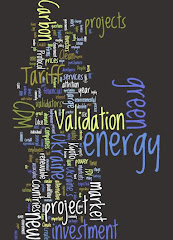
Greetings all!
Ukraine’s government has been quite proactive during the first half of 2009 with regard to the renewable energy and carbon sectors. In April, the President approved a "revised" Green Tariff rate calculation methodology... resulting in even higher prices than before for alternative energy producers. Also the government has been working to complete Ukraine’s Green Investment Scheme through the National Agency for Environmental Investments, and has sold 30 million AAUs to Japan. In the coming weeks, Ukraine will most probably complete transactions for over double this amount to additional buyers.
The higher green tariff rate schedule, along with the government’s activity to complete Ukraine’s Green Investment Scheme and to undertake ambitious AAU trades, means that right now we see the most fertile environment for Ukraine’s alternative energy sector growth since the country’s 1991 independence.
New green tariff prices are paid directly by Ukraine's Wholesale Energy Market as the counterparty buyer, which is good. It means that under the present Green Tariff mechanism there is no necessary "purchase price negotiation" (at this moment) between local alternative energy providers and the local oblenergos – distribution companies – that power providers must link into.
I will keep my eye on things as they develop or change. Also I will monitor how individual alternative energy companies fare, in terms of application and payment under this system.
But as you can see from the current price calculations below, alternative energy sales prices make it very attractive to invest. It is important to note that these rates are only available to new projects that are built from 2009 onwards. Click on the chart below and it should increase the viewing size.
Cheers,
Jon



